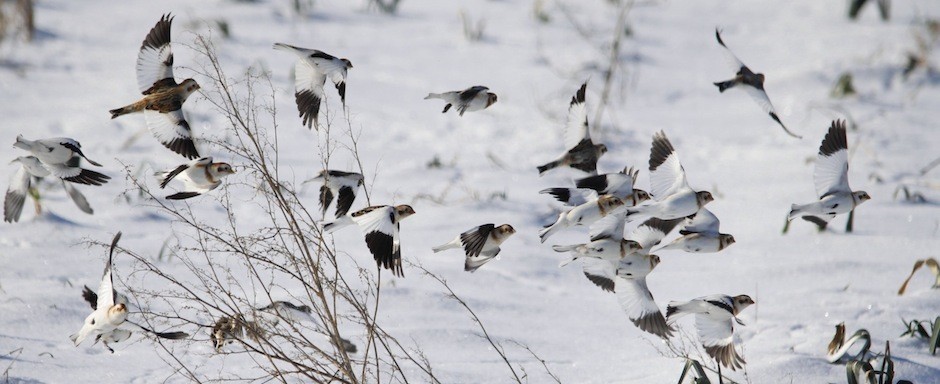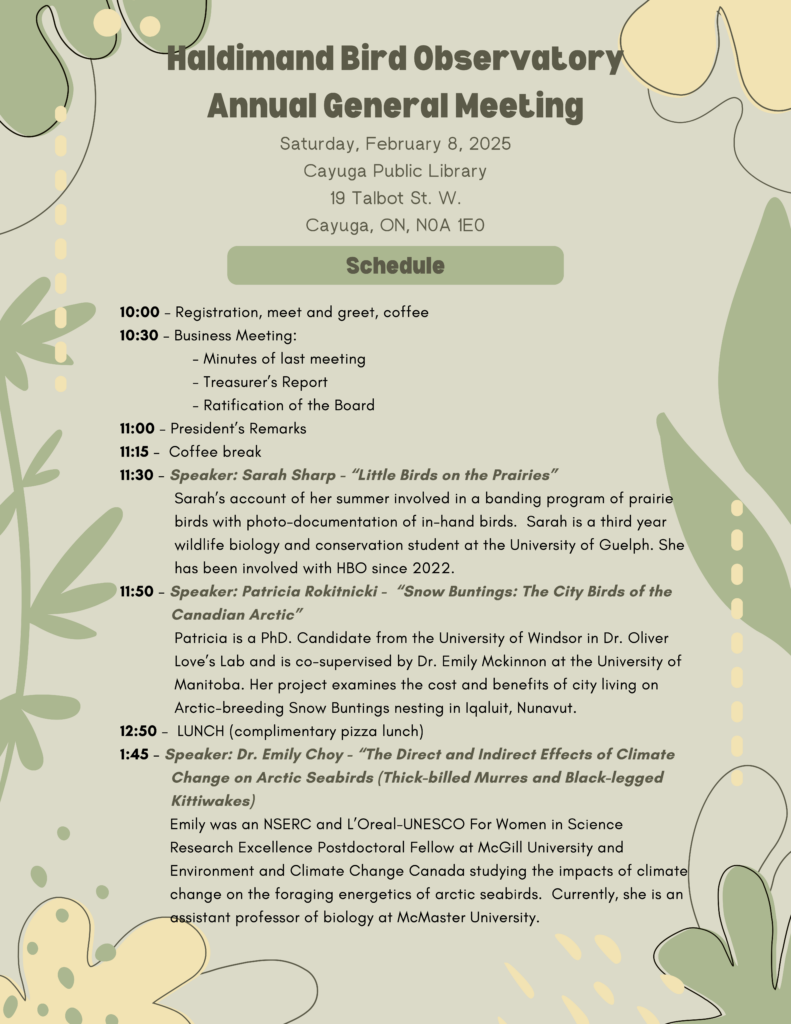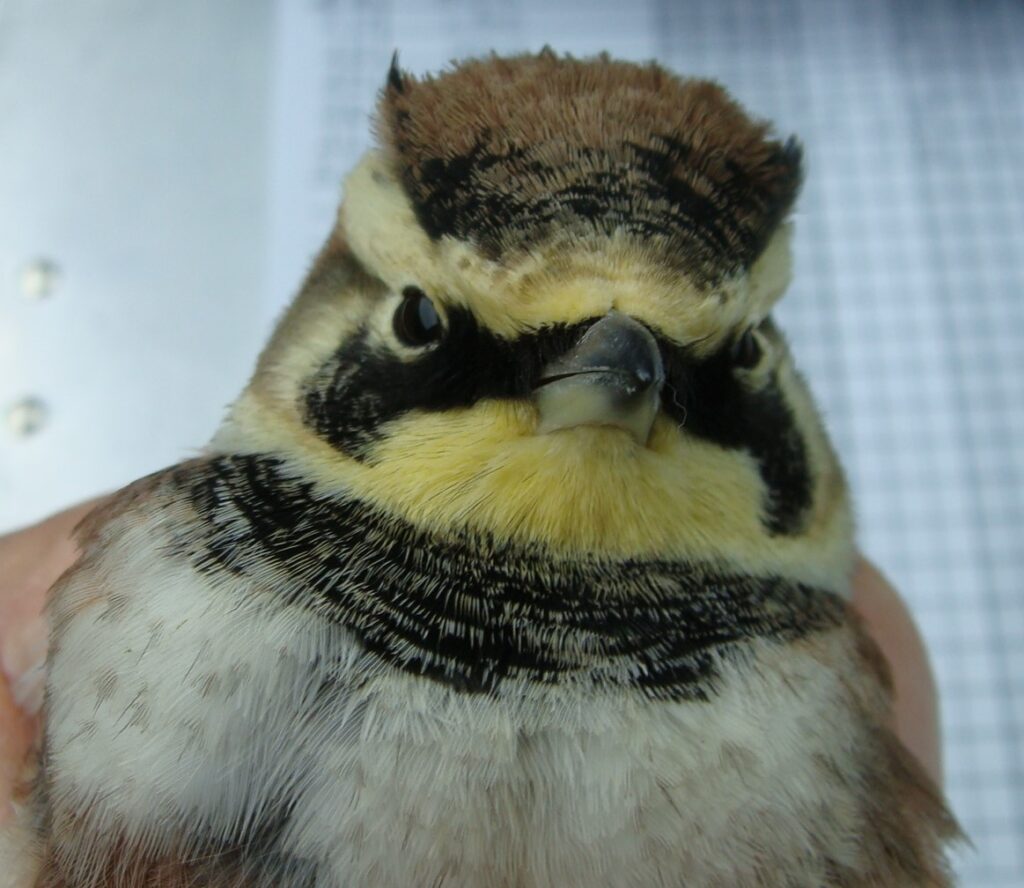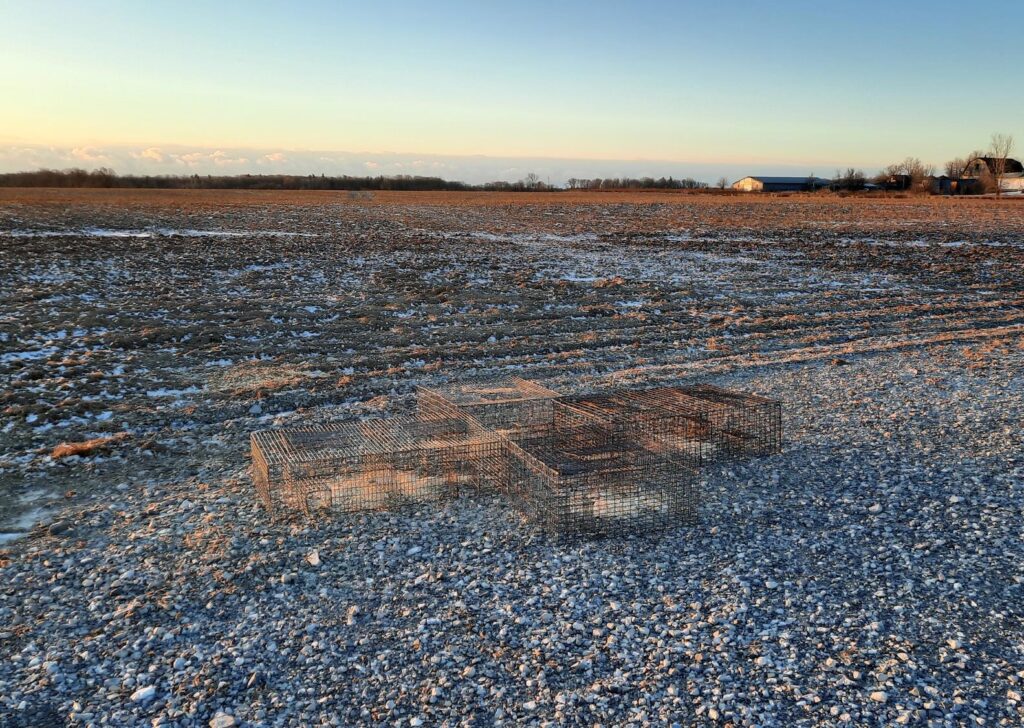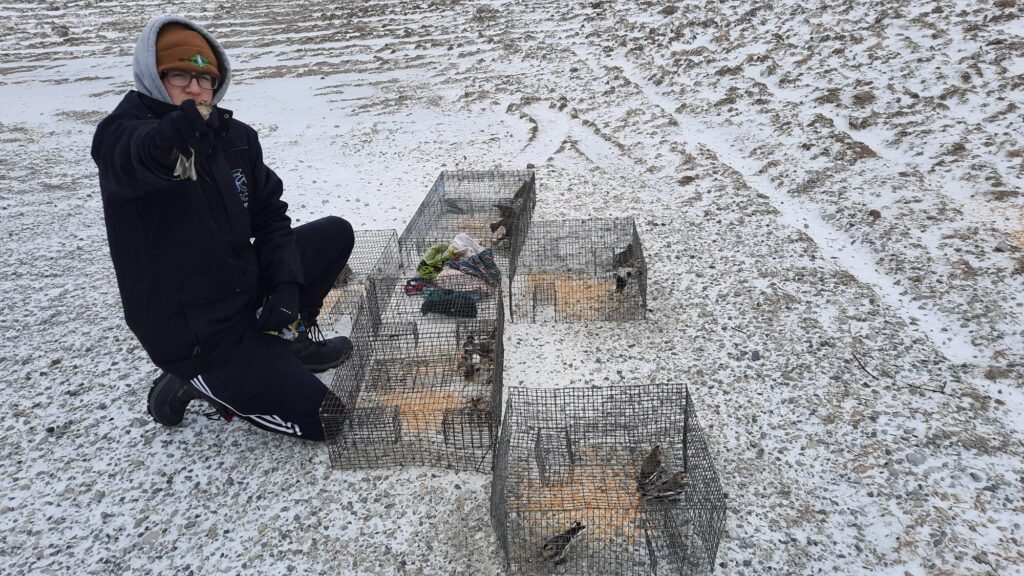
Liam clearing traps – hard work in the cold and biting wind. -DOL
It was -20 C first thing this morning, colder with the wind chill. For Canadians these conditions
should have been conjuring up scenes of skating on frozen ponds, skiing through spruce woods. But…I heard a lot of…well, I guess bitching would be the best descriptor. But we all know that these are the conditions that separate the Snow Bunting aficionados from all the rest. Snow Bunting banders are a rare breed indeed. Impervious to the cold and cutting wind, they hunker down in heatless vehicles after setting corn-baited traps to entice the little birds so they can be banded and measured and then released. Other than not liking much being handled by giants that they think are going to eat them, the birds don’t mind the conditions at all. And…here is a bonanza of nutritious, super-rich food to help them through the conditions and prepare them eventually for their return to the Arctic.
And so it was with the attitude of the aficionado that Liam and I met up early at the York Airport to see if we could catch any. We knew that, although there was very little snow, the birds would likely storm the piles of corn, whether enmeshed or not. I had been preparing them for this, maintaining “bait piles” for days on end whether there were birds around or not – usually twice a day. Many birds have now learned that there’s a consistent source of food at my site when they need it. When it warms up and the ground is bare they are content to range over the countryside looking for whatever is available. But when times get hard, they know where to go.
Yesterday afternoon I visited the site and found a group of about 30 birds hoovering up the corn. A good sign. I replenished it and left, confident that they would be looking for it today. And so they were!
Liam and I spent a frenetic morning emptying the traps, banding, and then re-emptying the traps again….and again.
We called it off around 12:30. Bird numbers were beginning to decline noticeably and, frankly, my toes were telling me to quit or lose them. But it had been a VERY successful morning: we banded 180 birds: 159 Snow Buntings, 18 Horned Larks, and 3 Lapland Longspurs. Plus we retrapped 17 birds most of which had been banded at the site earlier – some in December and some January. But there was one Snow Bunting that had been banded at Marnie’s Irish Line site on the 17th. And there were 2 more with bands that I didn’t readily recognize and am very interested to get their history.
Many folks are concerned that these conditions are hard for these birds and they’re at risk. Remember, these are birds that are adapted to the rigors of the Arctic. All the birds we handled were in excellent physical shape and carrying at least some fat and, in some cases, a lot of fat. And this after spending a night sleeping out in this cold. Amazing little birds!!
So the next time you walk out the door into frigid cold, don’t complain, take a deep breath and think….Snow Bunting.
Rick
Like this:
Like Loading...
